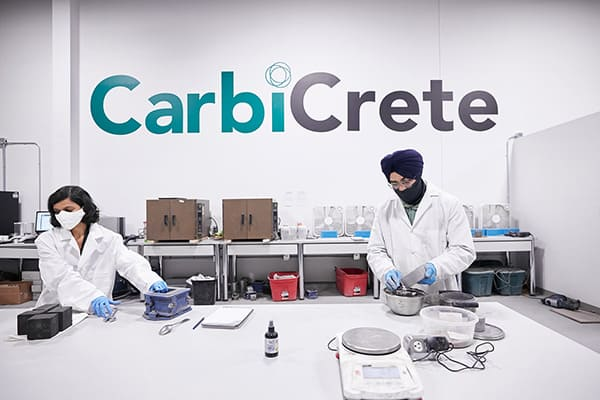Most of the focus is on switching energy production away from fossil fuels and electrifying transportation, including buses, cars, and airplanes, as the urgency surrounding climate change increases. Energy production and transportation are the primary two sources of Carbon dioxide emissions. The third-placed industry, which is a similarly complex beast, incorporates concrete to a large extent, reported Singularity hub.
Concrete is supposedly the second-most-used material on Earth after water. We are surrounded by it, but we seldom give it any thought. We cannot exist in modern civilization without it; it is a fundamental component of our highways, schools, houses, offices, and much more. But we’ll have to start making an effort. Cement production, the primary component of concrete, is responsible for an astounding 8% of global emissions.
What is this new type of concrete made up of?
The primary component of concrete is cement, a sophisticated mixture of calcium, silicon, aluminum, iron, and other elements. These are burned to very high temperatures, which triggers a chemical reaction in which some of the elements burn off, and the remainder becomes powder. The emissions from this process are double-edged: first, the energy and heat required to attain these high temperatures are produced by burning coal or natural gas; second, the chemical reaction of the cement components produces CO2.
How is this new concrete made?
The new concrete is called CarbiCrete and it functions differently. To begin with, steel slag has been used in place of cement entirely. Slag is the byproduct of the metal-making process; it is what is left over after iron is removed from iron ore to manufacture steel. Slag is frequently used as an aggregate in building, most frequently for paving roads. To create CMUs (concrete masonry units, the concrete blocks used for construction), they combine the slag with the aggregate and water and then pour the material into the molds.
The blocks must be cured to solidify and reach their maximum strength. According to the company, this occurs in an absorption chamber where CO2 is introduced, igniting yet another chemical reaction. “During the carbonation process, the CO2 is permanently captured and converted into stable calcium carbonates, filling the voids of the matrix to form a dense structure and giving the concrete its strength,” it says. In 24 hours, full strength is attained.
Image credits: Carbicrete
Is this concrete flawed in any way?
However, one major limitation is that CarbiCrete can only be used in pre-cast form; it cannot be put in a mixer truck and poured on-site at a construction site because CO2 absorption is a vital aspect of the procedure and must be done in a dedicated chamber.
CarbiCrete licenses the technology to concrete producers, who can use it to build precast facilities rather than selling CMUs. The technology might be utilized to create blocks, panels, beams, or any other pre-cast product, depending on the size of the absorption chamber. Even on a small scale, carbon-negative concrete is a step toward completely sustainable construction technology.
To ‘science-up’ your social media feed, follow us on Facebook, Twitter, or Instagram!
Follow us on Medium!





1 comment
[…] and 30x stronger than stainless steel and other common structural steel. A bonus is that it is carbon-negative at scale. As compared to aluminium, Galvorn is 30x stronger and is apt for making lightweight […]